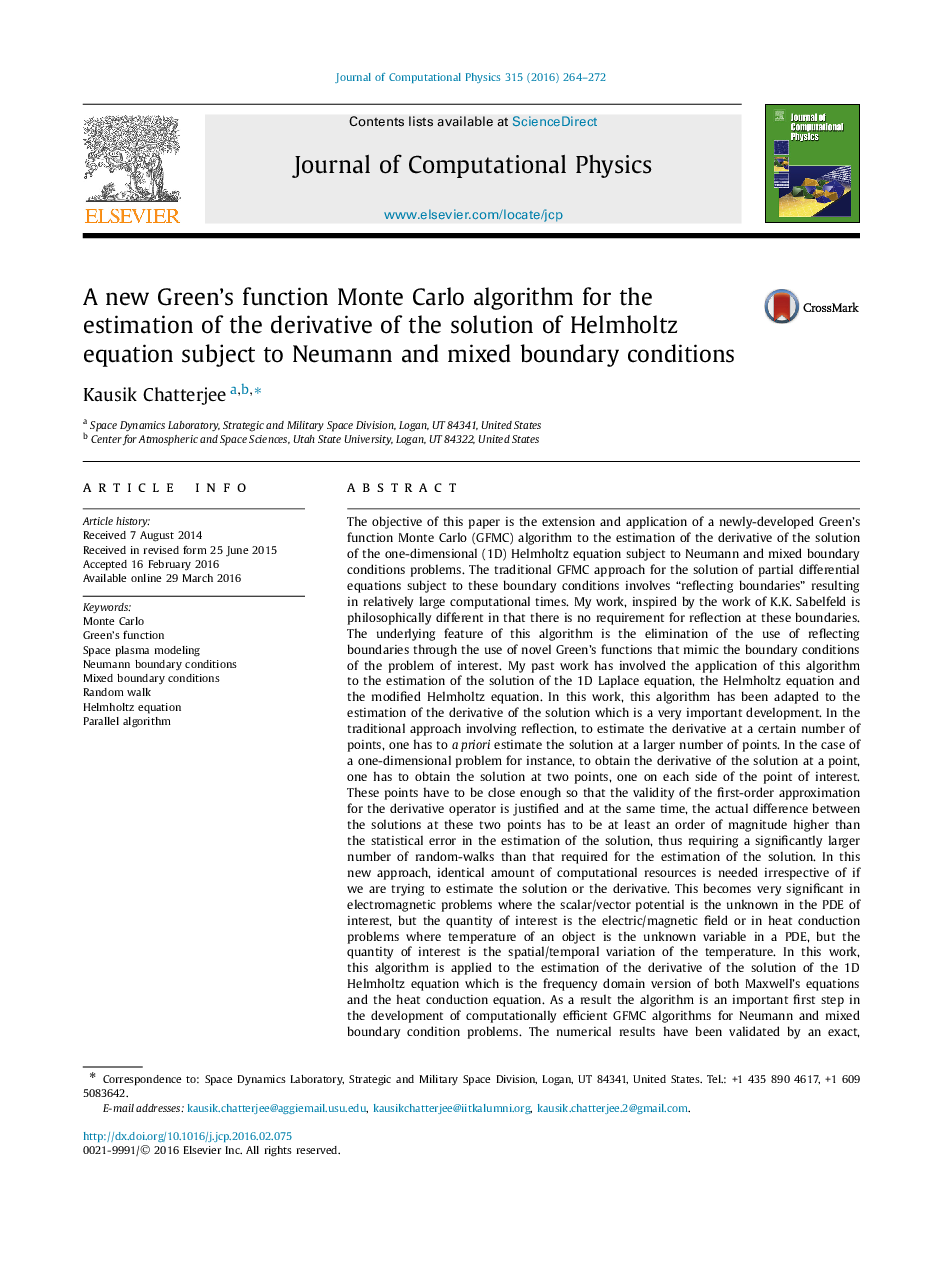| کد مقاله | کد نشریه | سال انتشار | مقاله انگلیسی | نسخه تمام متن |
|---|---|---|---|---|
| 6930211 | 867526 | 2016 | 9 صفحه PDF | دانلود رایگان |
عنوان انگلیسی مقاله ISI
A new Green's function Monte Carlo algorithm for the estimation of the derivative of the solution of Helmholtz equation subject to Neumann and mixed boundary conditions
ترجمه فارسی عنوان
الگوریتم مونت کارلو برای عملکرد برآورد مشتق از راه حل معادله هلمولتز تحت شرایط نومان و شرایط مرزی مختلط
دانلود مقاله + سفارش ترجمه
دانلود مقاله ISI انگلیسی
رایگان برای ایرانیان
کلمات کلیدی
موضوعات مرتبط
مهندسی و علوم پایه
مهندسی کامپیوتر
نرم افزارهای علوم کامپیوتر
چکیده انگلیسی
The objective of this paper is the extension and application of a newly-developed Green's function Monte Carlo (GFMC) algorithm to the estimation of the derivative of the solution of the one-dimensional (1D) Helmholtz equation subject to Neumann and mixed boundary conditions problems. The traditional GFMC approach for the solution of partial differential equations subject to these boundary conditions involves “reflecting boundaries” resulting in relatively large computational times. My work, inspired by the work of K.K. Sabelfeld is philosophically different in that there is no requirement for reflection at these boundaries. The underlying feature of this algorithm is the elimination of the use of reflecting boundaries through the use of novel Green's functions that mimic the boundary conditions of the problem of interest. My past work has involved the application of this algorithm to the estimation of the solution of the 1D Laplace equation, the Helmholtz equation and the modified Helmholtz equation. In this work, this algorithm has been adapted to the estimation of the derivative of the solution which is a very important development. In the traditional approach involving reflection, to estimate the derivative at a certain number of points, one has to a priori estimate the solution at a larger number of points. In the case of a one-dimensional problem for instance, to obtain the derivative of the solution at a point, one has to obtain the solution at two points, one on each side of the point of interest. These points have to be close enough so that the validity of the first-order approximation for the derivative operator is justified and at the same time, the actual difference between the solutions at these two points has to be at least an order of magnitude higher than the statistical error in the estimation of the solution, thus requiring a significantly larger number of random-walks than that required for the estimation of the solution. In this new approach, identical amount of computational resources is needed irrespective of if we are trying to estimate the solution or the derivative. This becomes very significant in electromagnetic problems where the scalar/vector potential is the unknown in the PDE of interest, but the quantity of interest is the electric/magnetic field or in heat conduction problems where temperature of an object is the unknown variable in a PDE, but the quantity of interest is the spatial/temporal variation of the temperature. In this work, this algorithm is applied to the estimation of the derivative of the solution of the 1D Helmholtz equation which is the frequency domain version of both Maxwell's equations and the heat conduction equation. As a result the algorithm is an important first step in the development of computationally efficient GFMC algorithms for Neumann and mixed boundary condition problems. The numerical results have been validated by an exact, analytical solution and very good agreement has been observed. The long-term goal of this research is the application of this methodology to the numerical solution of the F region ionization problem in space plasma modeling.
ناشر
Database: Elsevier - ScienceDirect (ساینس دایرکت)
Journal: Journal of Computational Physics - Volume 315, 15 June 2016, Pages 264-272
Journal: Journal of Computational Physics - Volume 315, 15 June 2016, Pages 264-272
نویسندگان
Kausik Chatterjee,
